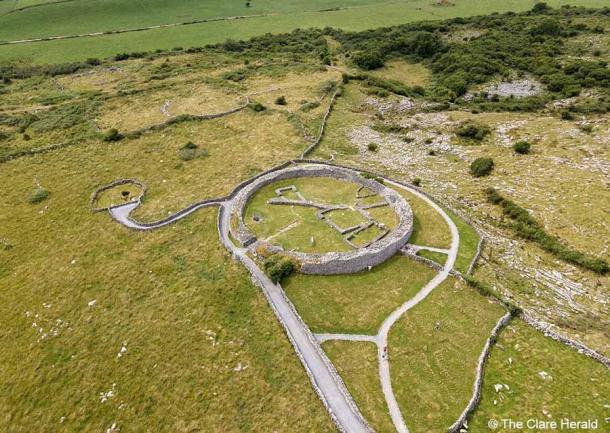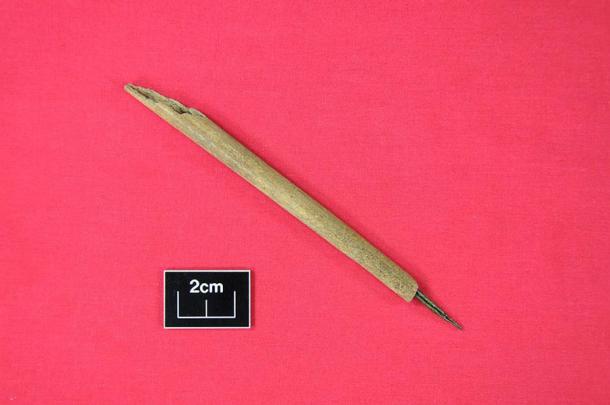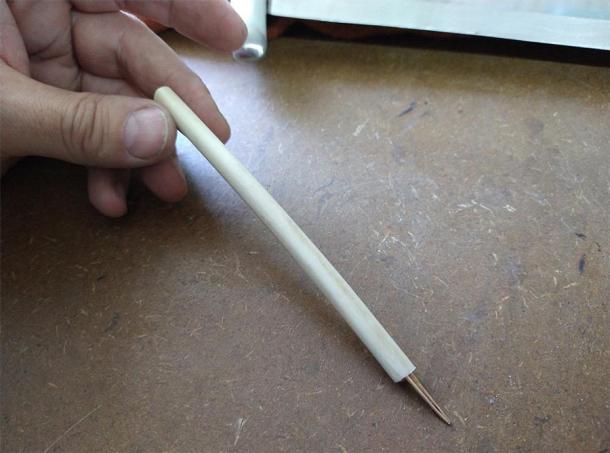1,000-Year-Old lnk Pen Found in Ringfort is Ireland’s Oldest
The British Isles’ oldest-known ink pen has been found during excavations of a Cashel, or stone fort, in County Clare. Archaeologist Michelle Comber of the National University of Ireland, Galway unearthed the 1,000-year-old writing implement from the Caherconnell Cashel.

This 140-foot-wide ringfort was built in the late 10th century and would have been home to wealthy — and, it seems, literate — local rulers until the early 1600s. Other artefacts from the site have shown that the occupants engaged in varied pursuits, from fine craftworking and metalwork to trade, games and music.
Most examples of early literacy in Ireland come from the Church, whose hardworking scribes painstakingly copied all manner of ecclesiastical texts.
Most famous, perhaps, is the Book of Kells — a manuscript created in honour of Christ in 800 AD that is resplendent with elaborate calligraphy and illustrations. However, Dr Comber believes that the individual who used the Caherconnell pen likely did so in order to record more mundane things like family lineages and trades.
Dr Comber told MailOnline that the bone-and-metal Caherconnell pen is the earliest complete example of a composite pen from anywhere within the British Isles.

Earlier in British history, however, the Romans were known to use pens that were made entirely of a copper-alloy, rather than sporting a separate barrel and nib.
In England, several copper-alloy nibs have been found, albeit without the necessary barrel, dating from between the 13th and 16th centuries. On the flip side, a couple of hollow bone pen shafts have been recovered from the London area that data to the 13th–15th centuries.
If, as suspected given their lack of splint point, these were originally used with attached nibs — much like the Caherconnell pen — such have been long lost.
According to Dr Comber, perhaps the most curious part of the discovery is the context from which it appears to have originated, namely in a secular, rather than religious, setting.

‘The Caherconnell Archaeology project has been a hugely rewarding one, with many unexpected and exciting discoveries along the way,’ the archaeologist explained.
‘This find has, however, exceeded all expectations, revealing the tantalising prospect of an advanced secular literacy in 11th-century Ireland.’
The fact that most known evidence of early literacy in Ireland is associated instead with the Church — and no pen of this age or type had previously been found — led Dr Comber to seek confirmation that the artefact could, indeed, have functioned as a writing tool.
Accordingly, she teamed up with experimental archaeologist Adam Parsons of Blueaxe Reproductions to fabricate a replica of the historical implement.

When put through its paces, the duo found that the modern duplicate does work — and its original counterpart would have worked — just perfectly as a dip pen.
Dip pens are those that have no ink reservoir as is characteristic of modern fountain pens and need to be returned to a well frequently to replenish their supply. This in itself set the Caherconnell pen apart, as the more common writing implement in the 11th century would have been the feather quill.
According to expert calligrapher and historian Tim O’Neill, the design of the Caherconnell pen would have lent it well for use on fine work — perhaps even the drawing of fine lines.
‘A metal pen from such an early date is still hard to credit,’ Mr O’Neill said.
‘But the fact that it functions with ink is there to see. It would have worked well for ruling straight lines — to form, for instance, a frame for a page.’





